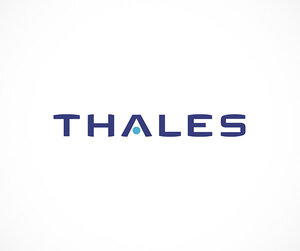Head of GOCE Verification and Testing: Interview with Paolo Laberinti
Paolo Laberinti has been responsible for overseeing the Assembly, Integration, Verification and Testing programme for the GOCE satellite and main subsystems throughout their various stages of development.

Paolo Laberinti, an Italian national, has been working for the GOCE Project at ESA's European Space Research and Technology Centre (ESTEC) in the Netherlands since 2002.
Laberinti gained his Masters in Electrical Engineering, specialising in robotics and automation, from the University Federico II in Naples, Italy. Before joining ESA he was Project Manager for COSMO-SkyMed satellites (Constellation of Satellites for Mediterranean basin Observation) at Alenia Aerospazio in Rome, Italy. He has also been responsible for the design, development and verification of satellite avionics in national and international programmes such as Radarsat 2, the first Italian space-based communications system SICRAL and the telecommunications satellite Artemis.
ESA: Would you explain what your role as Head of Integration, Verification and Testing entails?
Paolo Laberinti
My role within ESA's GOCE Project has been to follow the development and integration of the satellite and major subsystems until they are delivered for final integration and testing. My role also involves coordinating the sequencing of verification and controlling the schedule of the key development models from subsystem to satellite.
ESA: GOCE is an unusual satellite in that it must remain ultra stable and fly in a very low orbit, has this made testing more complicated compared to other satellites?
Paolo Laberinti
The main problem we face testing all satellites at ground level is in creating an external environment and operational conditions representative of what the satellite will encounter in space. Setting up a testing programme for GOCE has been particularly challenging because we are subject to gravitational accelerations at ground level millions of times greater than what GOCE will sense in orbit. In addition, the satellite is peculiar because in terms of micro-accelerations it needs to use the output of the payload to control the attitude and orbit of the satellite. We therefore had to devise a very special integration and testing programme.
ESA: GOCE will demonstrate new technology in space, so how difficult is to test how new instruments will perform in orbit?
Paolo Laberinti
It has been very difficult to get as close as possible to ‘in-orbit’ conditions. We had one test that involved dropping the accelerometers and electronics 120 metres from the Zarm Drop Tower in Bremen in Germany. In another test at the ONERA laboratories in Paris in France we had to apply high voltages, above 1000V, to gain the appropriate gravitational force on an ultra-stable pendulum. We then translated the results of these tests through a very sophisticated real-time simulation environment to simulate the dynamic conditions needed to verify the attitude and orbit control for GOCE.
ESA: Since GOCE has been designed and built by a consortium of many companies, who has the overall responsibility of ensuring that the satellite is properly tested?
Paolo Laberinti
The GOCE Prime Contractor, Thales Alenia Space – Italy, is ultimately responsible for the verification and testing of the satellite. However, as I mentioned, the verification programme had to rely on special tests that were organised and carried out at different levels under the responsibility of several sub-contractors – through EADS-Astrium GmbH for the platform and through Thales Alenia Space France for the payload. In essence, the whole GOCE consortium has contributed and shared the responsibility for proper testing of the satellite.
ESA: ESA-ESTEC in the Netherlands has a large test centre, how much of the testing programme has been carried out there?
Paolo Laberinti
Both the satellite development models, i.e. the Satellite Model (SM) and the Proto Flight Model (PFM) were tested in our test centre at ESA-ESTEC in Noordwijk, the Netherlands. The satellite SM was transported to ESA-ESTEC in April 2004 and underwent mechanical qualification tests. The SM test programme was successfully completed at the end of July 2004. The full environmental test campaign for the satellite PFM was also carried out at ESA-ESTEC between September 2007 and April 2008. This included the
ESA: What has been the most rewarding aspect of being involved with the GOCE mission?
Paolo Laberinti
The day we completed the very complex integration and testing programme was a moment of great satisfaction and rewarding for the effort spent overcoming the many challenges. However, the really rewarding aspect of this mission has been the opportunity to share this with colleagues from ESA and from the industrial consortium who have all been fully committed to the success of our programme. The team members have spent many long hours, weekends and holiday periods working on testing the satellite, its subsystems and ground-support equipment. So, arriving at the end of this with the satellite ready for launch is extremely rewarding for us all.
ESA: Where will you be for launch?
Paolo Laberinti
I will follow the launch at ESA-ESTEC along with many colleagues who have supported the mission.
Editor's note:
This is one in a series of interviews with a few of the key people that are involved in the GOCE mission. Please check back as the list will be added to over the coming weeks.




